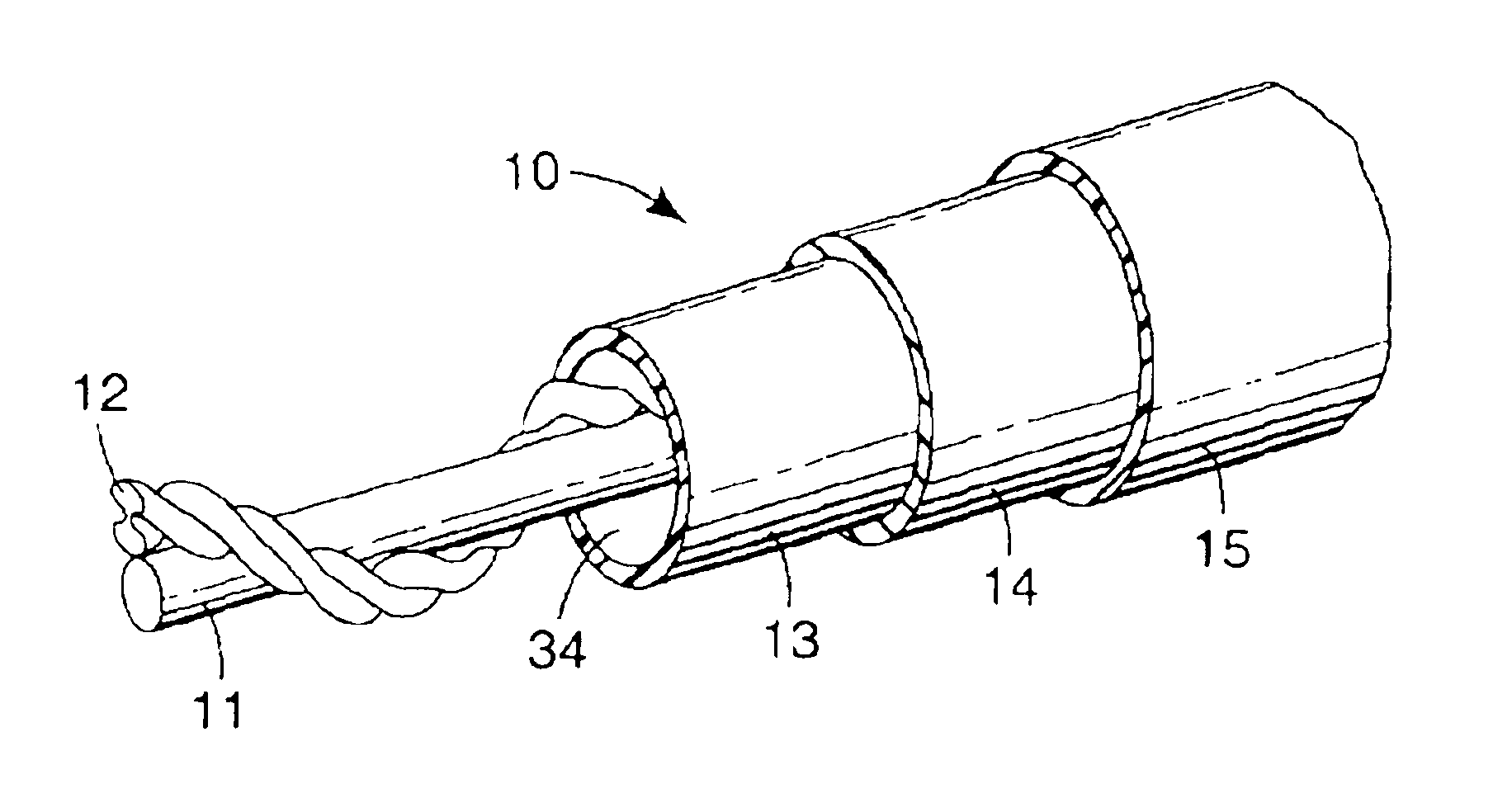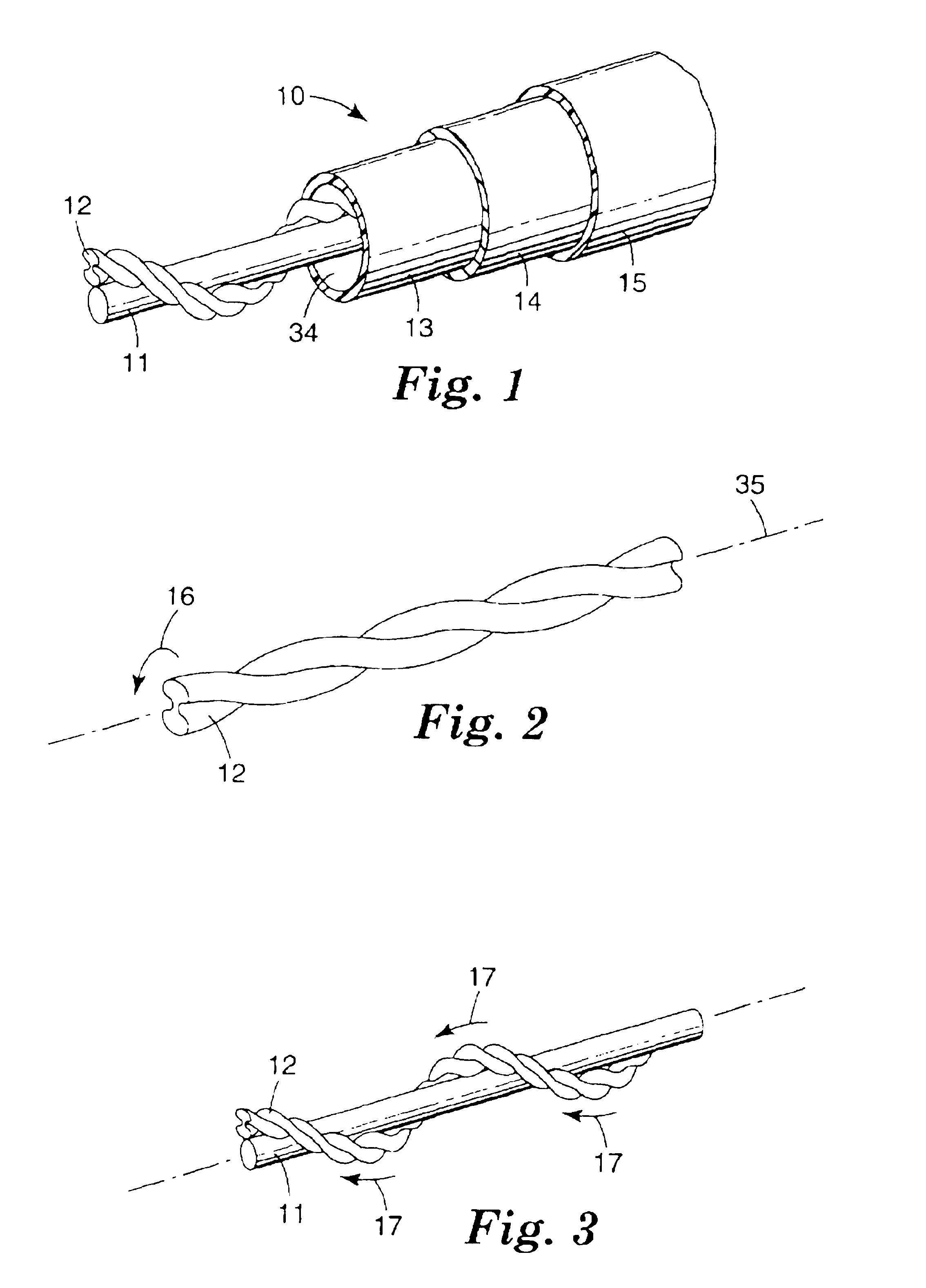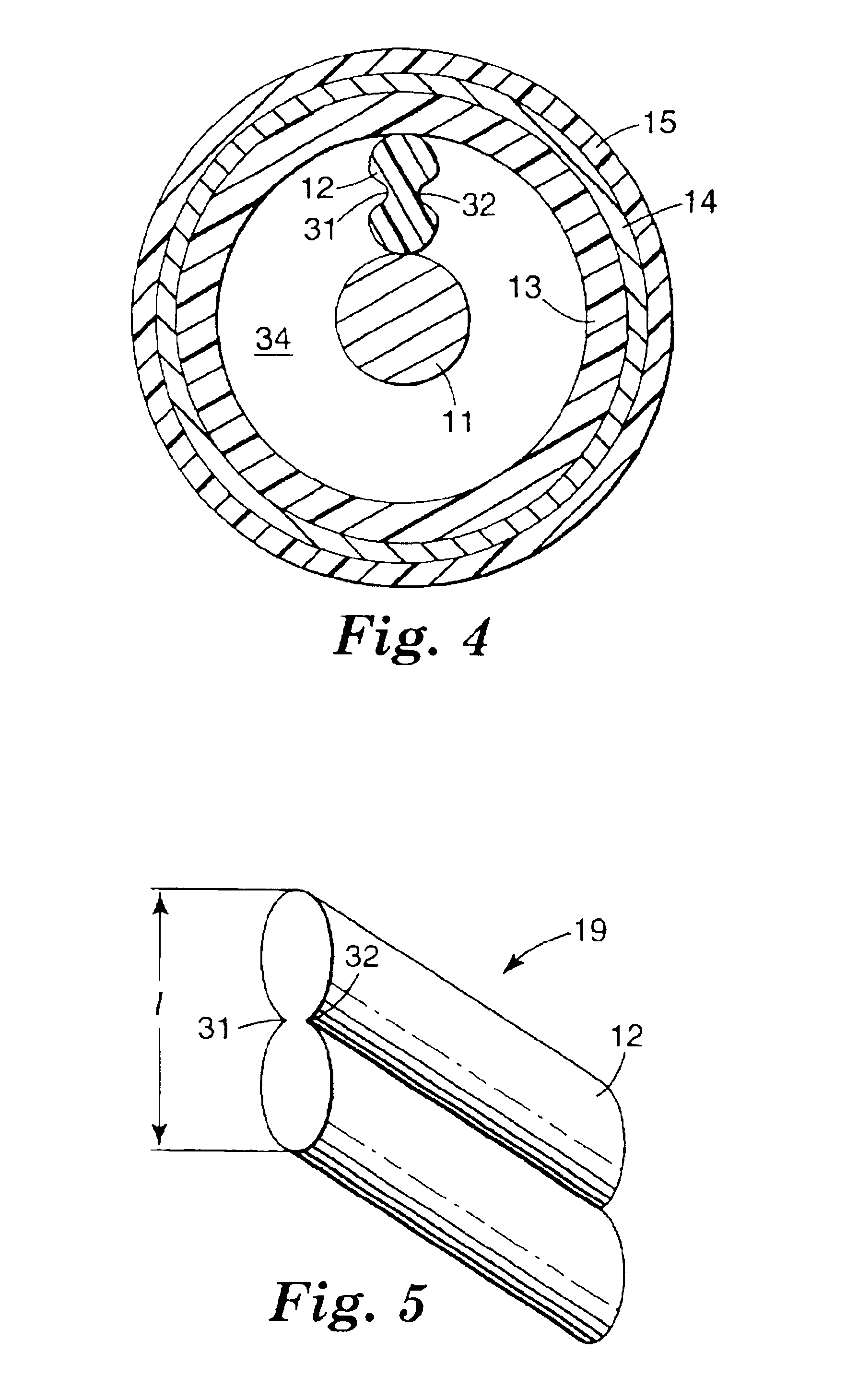High propagation speed coaxial and twinaxial cable
a coaxial and twin-core technology, applied in the direction of power cables, cables, insulated conductors, etc., can solve the problems that air alone cannot supply structural stability, combination of characteristics has proved difficult to realize commercially, etc., to reduce the incidence of small capacitance changes, reduce attenuation, and constant impedance
- Summary
- Abstract
- Description
- Claims
- Application Information
AI Technical Summary
Benefits of technology
Problems solved by technology
Method used
Image
Examples
first embodiment
FIGS. 1 and 4 show an air core coaxial cable 10 constructed in accordance with the invention. Cable 10 has an inner conductor 11, and a solid core filament spacer 12 that is twisted around its own axis and then helically wound around inner conductor 11. Dielectric tube 13 is formed around spacer 12. Outer conductor or shield 14 is formed on top of tube 13, and an outer plastic jacket 15 is applied around shield 14.
As with all spacers of the first embodiment, spacer 12 in FIGS. 1 and 4 is formed with substantially less cross-sectional area than a spacer of circular cross-section with an equivalent spacing characteristic. Spacer 12 has a “dumbbell” profile; but its profile may alternatively have any of the “profiles” hereinafter specifically illustrated, or other “profiles” of equivalent nature which practitioners in the art can realize. Advantageously, spacer 12 is formed by extrusion, a process which is well-suited to creating numerous different “profiles”.
The surfaces of spacer 12 ...
second embodiment
If one or more strength members 48 are included in any the above-described embodiments, then in accordance with a further variation of the invention the spacer 12 instead of being a solid extrusion may consist of expanded materials of the type described below in the
A wide range of materials may be used to fabricate extruded spacers 12, including flouoropolymers such as perfluoroalkoxy (PFA) and fluorinated ethylene propylene (FEP); and polyolefins such as polyethylene (PE), polypropylene (PP) and polymethyl pentane. Of these, a preferred choice is PFA because of its low dielectric constant and dissipation factor.
By way of example, a 50 ohm coaxial cable constructed in accordance with the first embodiment of the invention consists of a silver-plated stranded copper inner conductor 11, an extruded dielectric spacer 12 of PFA material, a tube 13 of FEP material, an outer conductor 14 of silver-plated copper wire braid and an outer jacket 15 of FEP. Inner conductor 111 has a diameter of...
PUM
| Property | Measurement | Unit |
|---|---|---|
| frequencies | aaaaa | aaaaa |
| diameter | aaaaa | aaaaa |
| outer diameter | aaaaa | aaaaa |
Abstract
Description
Claims
Application Information
 Login to View More
Login to View More - R&D
- Intellectual Property
- Life Sciences
- Materials
- Tech Scout
- Unparalleled Data Quality
- Higher Quality Content
- 60% Fewer Hallucinations
Browse by: Latest US Patents, China's latest patents, Technical Efficacy Thesaurus, Application Domain, Technology Topic, Popular Technical Reports.
© 2025 PatSnap. All rights reserved.Legal|Privacy policy|Modern Slavery Act Transparency Statement|Sitemap|About US| Contact US: help@patsnap.com



